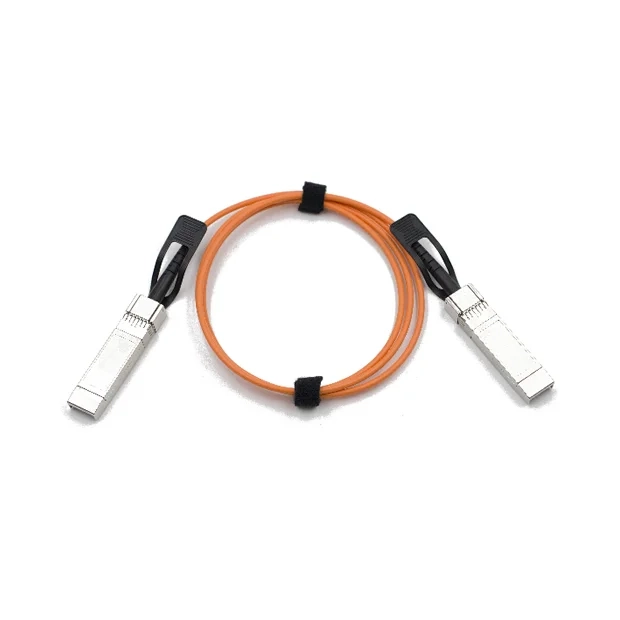With the rapid development of information technology, optical fiber communication has become an important pillar of modern communication systems. As an indispensable part of the optical fiber communication system, the safe and stable operation of optical modules is crucial to ensuring efficient data transmission. This article will discuss in detail the safe use and protective measures of optical modules to ensure that the optical modules can work stably and reliably in various environments.
An optical module is a device in an optical fiber communication system that converts electrical signals into optical signals or converts optical signals back into electrical signals. It mainly includes core components such as transmitters, receivers, and photoelectric conversion chips. There are many types of optical modules, which can be divided into 10G, 40G, 100G, etc. according to the transmission rate; they can be divided into SFP, SFP+, QSFP, etc. according to the interface type.
1. Safe use of optical modules
The safe use of optical modules is a prerequisite for ensuring the stability of the communication system. Here are some key safe usage recommendations:
Choose the appropriate optical module: Select the optical module with corresponding specifications according to the system requirements, such as transmission distance, rate, and wavelength.
Install the optical module correctly: Make sure the device is powered off before installation, and operate according to the guidelines provided by the manufacturer to avoid static electricity or physical damage.
Avoid looking directly at the light emitted by the optical module for a long time: the optical module emits laser light when working, and direct viewing may cause damage to your eyes.
Keep the optical module clean: Dust and contaminants will affect the performance of the optical module, so regular cleaning of the optical interface is necessary.
Pay attention to heat dissipation issues: Some high-speed optical modules generate a lot of heat and require a good heat dissipation design to avoid performance degradation or damage caused by overheating.

2. Protective measures for optical modules
In order to ensure the long-term stable operation of the optical module, it is essential to take appropriate protective measures. Here are some important protective measures:
Anti-static protection: When operating optical modules, anti-static measures should be taken, such as wearing an anti-static bracelet, using anti-static mats, etc.
Mechanical protection: Ensure that the optical module is installed in a vibration- and impact-proof environment to avoid physical damage.
Temperature and Humidity Control: Maintain constant ambient temperature and humidity to prevent damage caused by environmental changes.
Power supply protection: Use a stable power supply and consider overvoltage and overcurrent protection measures.
Lightning strike and electromagnetic interference (EMI) protection: In lightning-prone areas, use surge protectors to prevent lightning damage; for environments that may be subject to strong electromagnetic interference, shielding measures should be taken.
Fiber optic interface protection: Use fiber optic connector protective sleeves to reduce the risk of physical damage to the fiber optic connector.
Software and firmware updates: Regularly check and update the software and firmware of the optical module to fix known vulnerabilities and improve performance.
3. Troubleshooting and maintenance
When problems occur with optical modules, timely and accurate troubleshooting can minimize losses. Here are some suggestions:
Regular monitoring: Monitor the working status and performance indicators of the optical module in real time through the management system.
Troubleshooting: Once a problem is discovered, use professional tools to diagnose it immediately and determine where the problem lies.
Backup plan: Prepare spare optical modules for quick replacement and reduce system downtime.
Develop a maintenance schedule: Establish a schedule for regular maintenance, including cleaning, inspections, and testing.
As the core component of the optical fiber communication system, the optical module's safe use and protective measures are crucial to the stable operation of the system. By following the above recommendations and best practices, we are able to maximize the reliability of the optical module, extend its service life, and ensure the security and efficiency of data transmission.
Revealing the key factors affecting the transmission speed of optical modules
Performance indicators of optical modules: key parameter analysis and application discussion
Explore optical module transmission distance and rate
Explore different types of optical module interfaces
Optical modules: From origin to future, explore the development history of optoelectronic devices
Optical module: core composition and structural analysis of optical communication system
Optical modules application guide: 7 key considerations to ensure smooth communication
The relationship between optical module power and optical communication performance
Core components of optical modules and their role in optical communication systems
Transmission rate and transmission distance of optical modules
Analyze the importance of performance parameters of optical modules in optical communication systems
Optical module heat dissipation design: key technology to ensure performance and lifespan
Optical module packaging form and size standards
Explore optical module compatibility issues
Application and technical requirements of optical modules in 5G communications
Why optical modules can solve network delay problems
How do optical modules improve data center performance and efficiency?
Market demand analysis of optical modules
How to check whether the optical module is damaged?
mia
coco.li@fineconn.cn

